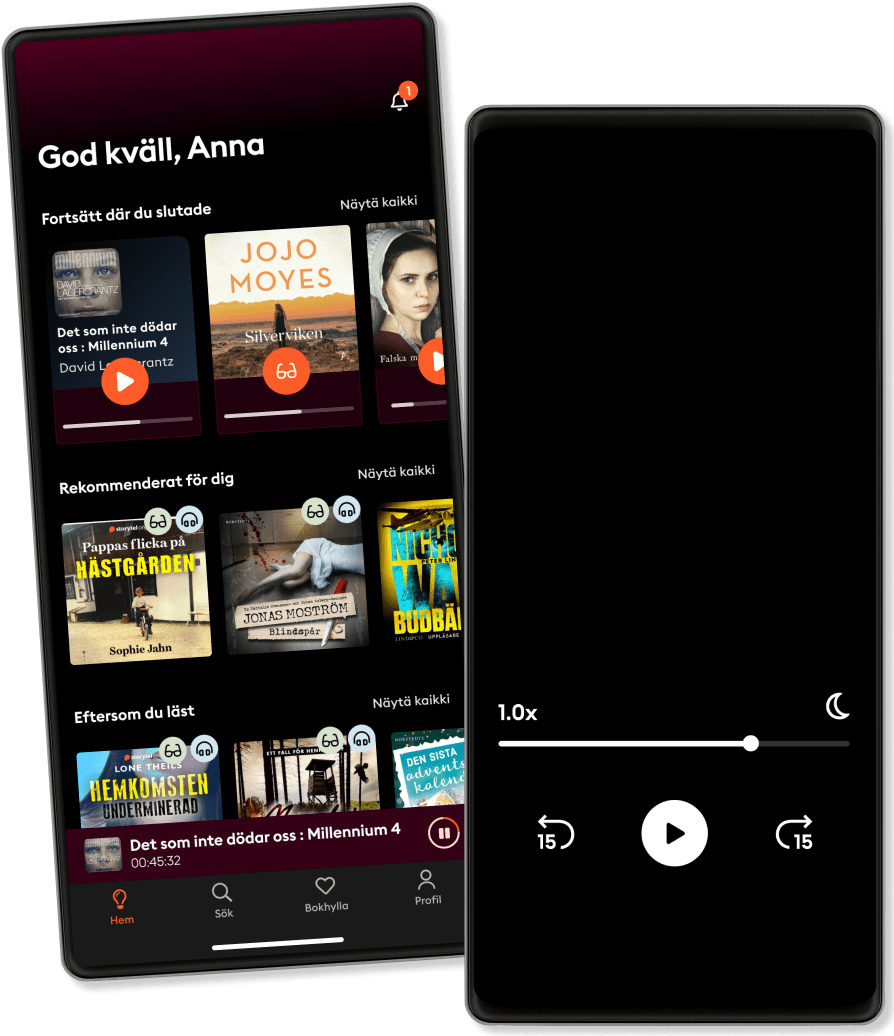ฟังและอ่าน
ก้าวเข้าสู่โลกแห่งเรื่องราวอันไม่มีที่สิ้นสุด
- อ่านและฟังได้มากเท่าที่คุณต้องการ
- มากกว่า 1 ล้านชื่อ
- Storytel Originals ผลงานเฉพาะบน Storytel
- 199บ./ด.
- ยกเลิกได้ทุกเมื่อ

The Spanish and Portuguese in the New World: The History and Legacy of the First European Rivalry in the Americas
- โดย
- บรรยายโดย:
- สำนักพิมพ์
- ระยะเวลา
- 6H 34นาที
- ภาษา
- ภาษาอังกฤษ
- Format
- หมวดหมู่
ประวัติศาสตร์
In 1451, Prince Henry the Navigator helped fund and develop a new type of ship, the caravel, that featured triangular lateen sails and would be able to travel in the open ocean and sail against the wind. In 1488, Bartholomew Diaz rounded the southern tip of Africa, named the Cape of Good Hope by King John of Portugal, and entered the Indian Ocean from the Atlantic.
One explorer, Christopher Columbus, sought funding from the Portuguese to search for a passage to Asia by sailing westwards, but he was rejected. At this time in the late 15th century, Portugal’s domination of the western African sea routes prompted the neighboring Crown of Castile and the Catholic monarchs in modern Spain to search for an alternative route to south and east Asia (termed Indies), so they provided Columbus with the funding he required. By the time Christopher Columbus started setting back east from the New World after landing there in October 1492, he had explored San Salvador in the Bahamas (which he thought was Japan), Cuba (which he thought was China), and Hispaniola, the source of gold. As the common story goes, Columbus, en route back to Spain from his first journey, called in at Lisbon as a courtesy to brief the Portuguese King John II of his discovery of the New World. King John subsequently protested that according to the 1479 Treaty of Alcáçovas, which divided the Atlantic Ocean between Spanish and Portuguese spheres of influence, the newly discovered lands rightly belonged to Portugal. To make clear the point, a Portuguese fleet was authorized and dispatched west from the Tagus to lay claim to the “Indies,” which prompted a flurry of diplomatic activity in the court of Ferdinand and Isabella.
© 2024 Charles River Editors (หนังสือเสียง ): 9798868708299
วันที่วางจำหน่าย
หนังสือเสียง : 15 กุมภาพันธ์ 2567
แท็ก
คนอื่นก็สนุก...
- The Portuguese Empire and Africa: The History and Legacy of Portugal’s Exploration and Colonization of the West African Coast Charles River Editors
- The Anatomy of Fascism Robert O. Paxton
- The Battle of Vienna (1683): The History and Legacy of the Decisive Conflict between the Ottoman Turkish Empire and Holy Roman Empire Charles River Editors
- The Great Siege: Malta 1565 Ernle Bradford
- The Venetians: A New History: From Marco Polo to Casanova Paul Strathern
- When Montezuma Met Cortes: The True Story of the Meeting that Changed History Matthew Restall
- The Crusades: The Authoritative History of the War for the Holy Land Thomas Asbridge
- Six Days of War: June 1967 and the Making of the Modern Middle East Michael B. Oren
- The Sleepwalkers: How Europe Went to War in 1914 Christopher Clark
- The Portuguese Inquisition: The History of the Portuguese Empire’s Religious Persecution of Non-Christians in Portugal and Asia Charles River Editors
- Atomic Habits เพราะชีวิตดีได้กว่าที่เป็น James Clear (เจมส์ เคลียร์)
4.9
- พ่อรวยสอนลูก : Rich Dad Poor Dad Robert T. Kiyosaki
4.9
- Real Alpha 1 Chiffon_cake
4.9
- AA01 นอนเยอะแต่ยังง่วง? เผยเคล็ดลับการนอนหลับให้มีคุณภาพ เพิ่มความสดชื่น THE STANDARD
4.7
- The Why Café คาเฟ่สำหรับคนหลงทาง John P. Strelecky
4.6
- The Whys of Life ชีวิตต้องสงสัย ณัฐวุฒิ เผ่าทวี
4.6
- ไพรมหากาฬ เล่ม 1 พนมเทียน
4.8
- Fourth Wing (1 of 2) [Dramatized Adaptation]: The Empyrean 1 Rebecca Yarros
4.7
- ไพรมหากาฬ เล่ม 2 พนมเทียน
4.6
- Fourth Wing (2 of 2) [Dramatized Adaptation]: The Empyrean 1 Rebecca Yarros
4.8
- Fourth Wing Rebecca Yarros
4.6
- นิทานคนรวย เปี่ยมศักดิ์ คุณากรประทีป
4.6
- เพราะเราคู่กัน 1 JittiRain
4.8
- Real Alpha 2 Chiffon_cake
4.9
- ความฉลาดทางการเงิน (Money Literacy) จักรพงษ์ เมษพันธุ์
4.9
ทุกที่ ทุกเวลากับ Storytel:
กว่า 500 000 รายการ
Kids Mode (เนื้อหาที่ปลอดภัยสำหรับเด็ก)
ดาวน์โหลดหนังสือสำหรับการเข้าถึงแบบออฟไลน์
ยกเลิกได้ตลอดเวลา
ภาษาไทย
ประเทศไทย